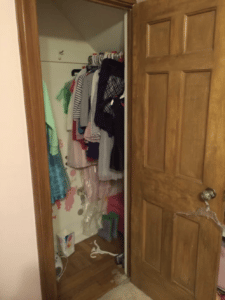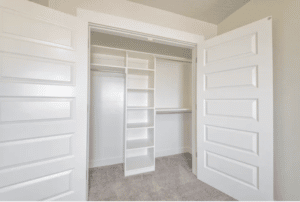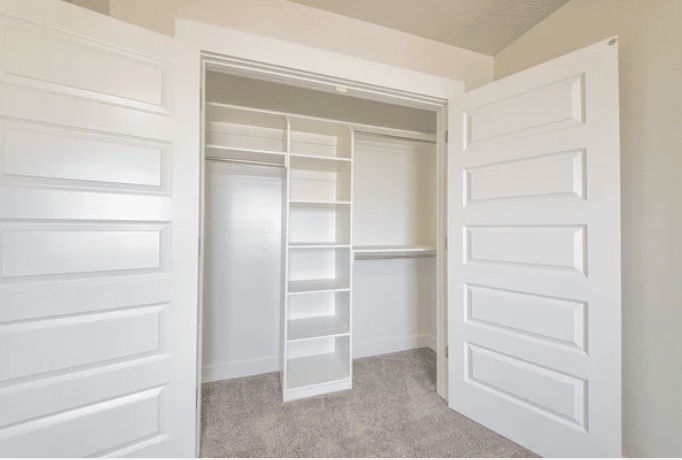A closet is merely space, unoccupied space until we give it meaning and purpose. I think of closets as a home, not only for our clothing, but our ideas, attitudes and memories. They hold our everyday outfits that prepare us to meet and greet the world. They contain items that reflect our upbringing, taste, style, preferences and our self-esteem. They tell the stories of our bodies, careers, love affairs, vacations and changing lifestyle. They reveal our purchasing patterns, favorite colors and preferred garments. They showcase our past, present and future. They hold powerful memories of our wins and losses. They remind us of how much money we earn and how much we’ve spent. And, according to Feng Shui (the Chinese practice of creating harmonious surroundings), they represent our subconscious mind.
Closets can also be where we stuff boxes, papers, momentos and miscellaneous items until we are ready to face them, physically and emotionally. This adds more “subconscious” energy to our closet.
THE FIRST CLOSET
Roman soldiers were the first to use a closet, as they needed a practical way to store and transport weapons and armor, especially on long journeys. The Latin word “armorium” became what we know today as an “armoire.”
CLOSETS IN EARLY MODERN EUROPE
The upper class in France popularized the armoire in the 16th century where they stored weapons, tools and clothing. England used closets as early as the 1550s which were more like today’s version of walk-in-closets than a reach-in closet that we’ve used in more recent history. Overall these were treated more as storage spaces than a place to house clothing. Due to industrialization, along with affordable goods, people began to acquire more things to store. This changed the view and use of the closet. But it took awhile for the “modern closet” to take shape.
THE AMERICAN CLOSET
The idea of a closet, as a dedicated space built into the home for storage, happened in the US around 1840. It was Americans that established the closet as its own space built directly into the wall during the 19th century. This became a standard feature in many American homes. After WW II, the world began to see what we think of as the modern closet. The economic boom following the war led to an even larger consumer culture in the U.S., and increased need for a place to keep everything. More people began moving to the suburbs and buying larger homes. These larger homes came with closets, and Americans had plenty of new clothes to fill them.
By the 1980s, people started to look at their closets in a new way. The question now became what you could do to upgrade a closet to make it more attractive and efficient. 
Growing up in the 50s I shared a closet with my sister — a single rod on each side of a very small closet. No shelving. We each had three pair of shoes, lined up on the floor of the closet. Something close to the size of this closet in the photo to the right. Since we wore uniforms to school, we had much less clothing than this photo shows and, even then, much neater — at least my side!


